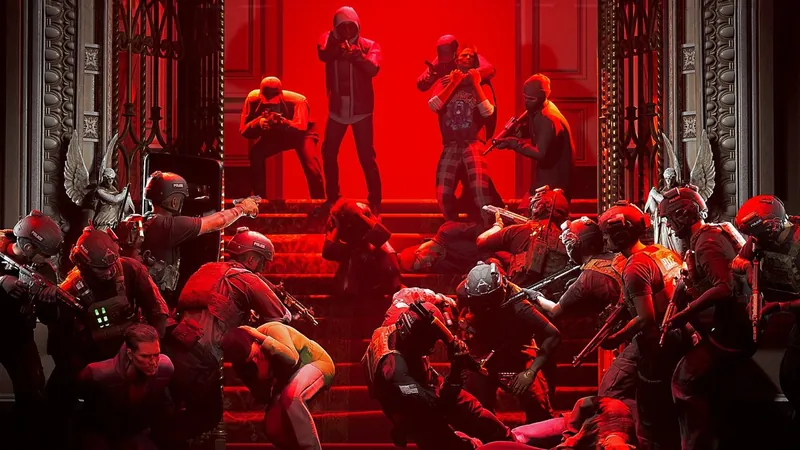
Unveiling the Cosmic Mysteries of the Big Red Dot
2025-07-10
Author: Siti
Astronomy's Peculiar Names
In the vastness of the cosmos, names often baffle us. Astronomers sometimes opt for grand titles, like the Extremely Large Telescope, while at other times they choose quirky labels, such as 'quasars.' Yet, there are instances where a name may seem descriptive but can mislead, as is the case with Little Red Dots (LRDs). These elusive celestial bodies are not mere dots; they are supermassive black holes, staggering hundreds of millions of times larger than our Sun.
A Glimpse into the Early Universe
Recent research spearheaded by Dr. Federica Loiacono and her team from Istituto Nazionale di Astrofisica in Italy brings a fascinating discovery to light. Using the James Webb Space Telescope, they have identified a remarkable LRD dating back approximately 11 billion years to a dynamic epoch known as 'cosmic noon.' During this bustling time in the universe, massive star formations and black hole activity peaked like never before.
Introducing the Big Red Dot
Among the discoveries, BiRD, short for Big Red Dot, shines brightly—it’s not just bigger but also the most luminous of its kind identified thus far. Dr. Loiacono’s team uncovered BiRD while examining a region near the quasar SDSS J1030+0524 as part of the Emission-Line Galaxies and Intergalactic Gas in the Epoch of Reionization (EIGER) survey.
A Cosmic Mystery in Motion
BiRD showcases extraordinary properties, such as blasting out helium gas at an astonishing velocity of 830 km/s, creating a unique absorption line in the light spectrum. However, this cosmic giant keeps researchers guessing—it remains surprisingly quiet in the X-ray and radio spectra where LRDs typically roar to life. The scientifically curious have hypotheses—could a dense gas cloud be obstructing X-rays, or is the black hole gorging on matter so voraciously that it forms a thick, light-blocking disk? The radio silence is still shrouded in mystery, leaving the team pondering possibilities.
Connections Across Time and Space
What makes BiRD even more intriguing is its similarity to two other LRDs unearthed from the same cosmic era: the 'Rosetta Stone' and RUBIES-BLAGN-1. All three share powerful helium gas outflows and similar sizes despite their distinctive names, suggesting a potential link in their evolutionary paths.
The Future of Astronomical Discoveries
As the capabilities of the James Webb and future telescopes expand, the universe's secrets will continue to unfold. Will BiRD prove to be an exceptional find among its contemporaries, or merely a representative of countless undiscovered black holes? Either scenario promises exciting advancements in astronomical knowledge, paving the way for a deeper understanding of the universe in its youth.




 Brasil (PT)
Brasil (PT)
 Canada (EN)
Canada (EN)
 Chile (ES)
Chile (ES)
 Česko (CS)
Česko (CS)
 대한민국 (KO)
대한민국 (KO)
 España (ES)
España (ES)
 France (FR)
France (FR)
 Hong Kong (EN)
Hong Kong (EN)
 Italia (IT)
Italia (IT)
 日本 (JA)
日本 (JA)
 Magyarország (HU)
Magyarország (HU)
 Norge (NO)
Norge (NO)
 Polska (PL)
Polska (PL)
 Schweiz (DE)
Schweiz (DE)
 Singapore (EN)
Singapore (EN)
 Sverige (SV)
Sverige (SV)
 Suomi (FI)
Suomi (FI)
 Türkiye (TR)
Türkiye (TR)
 الإمارات العربية المتحدة (AR)
الإمارات العربية المتحدة (AR)